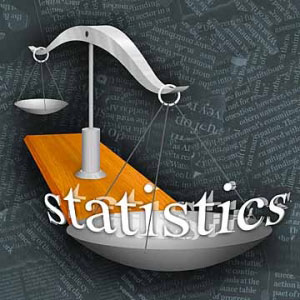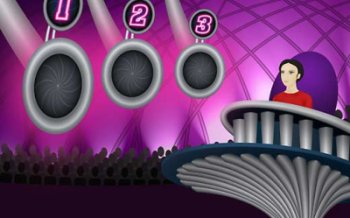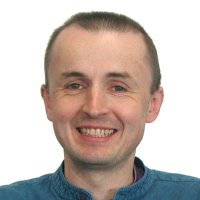As the three members of the founding editorial team, we're delighted to be wishing Plus a Happy Tenth Birthday.

Plus stimulates your brain. Find out why you were born with maths in Issue 19 of Plus.
Back in 1996, the magazine began when our entry for that year's BT University Development Award competition was one of the lucky winners. At the time, BT's telecom tower on Tottenham Court Road, where the award ceremony was held, gave the finest views over central London. Today, the London Eye is the only public vantage point with the same scope, but that's not all that has changed.
The BT Award, plus generous additional support from Cambridge Assessment, funded our two-year pilot phase and the first six issues. It is hard to remember that back in 1996 hardly any homes or schools had broadband access. In fact only a minority had even dial-up access to the Internet, so the first few issues had to be sent out to schools in the form of posters or CDs. Sounds easy, but as we soon learnt, obtaining a complete list of UK schools was very difficult indeed. Nonetheless, we were confident that the Internet would take off at some point and become the dominant technology for publishing. And there's something else that changed. Originally we called the magazine PASS Maths, short for Public Awareness and Schools Support for Mathematics. It became Plus. That was definitely a positive move.

The first issues of Plus were distributed on CDs.
To emphasise how different things were 10 years ago, technologically speaking, we mention that making CDs, though trivial today, was itself a challenge. We had to get the PASS Maths CD mastered in Germany, as it could not be done in the UK.
The rate of technological change may have been phenomenal, but some fundamentals about public awareness of mathematics are changing more slowly. A glance at Issue 41 for example shows authors are still concerned about the image of mathematics: Rebecca Morris in her article about David Hilbert writes:
"Rather unfortunately, and in my opinion wrongly, the mathematician is thought to be a slave to formulae, equations, impenetrable books and dusty blackboards."
Hilbert is still famous, amongst other things, for his challenge, issued in 1900, of "23 problems which he believed would spur on mathematical thought for the upcoming century" (see The Hilbert challenge). It took most of the 20th Century for the majority of these problems to be solved. The problems that Plus aims to tackle are not directly mathematical but we're not afraid to claim that, as mathematical understanding can make a vital contribution to the future of the world, they are of similar importance. We just hope it will not take a century to make progress here.

The scales of justice. Sally Clark's case was discussed in Issue 21 of Plus.
That mathematical understanding can be a matter of life and death has been tragically illustrated several times in the past decade. One of the most harrowing stories is that of Sally Clark who was wrongly convicted of the murder of her two children. Statistical evidence was used in her trial, but she was exonerated when an appeal court found that the jury had been misled by an expert witness, albeit unintentionally (see Plus article Beyond reasonable doubt). This is not the place to go into the various injustices of this case. It is clear and quite shocking that despite the large number of legal and medical experts involved in the original trial, an erroneous statistical argument went unchallenged.
Misunderstandings about probability and statistics have remained high on the list of issues for Plus authors. Issue 2 ran the article Are the polls right? about misleading press discussion of opinion polls in the run up to an election. Issue 4 had the article What a coincidence and ran the Three door game problem (and subsequently its solution), which itself featured in the celebrated novel The curious incident of the dog in the night-time. The problem appears again in 21st century form in Issue 32 as Thomas Bayes & Mr Zootpooper.

The three door problem featured in Issue 32 of Plus.
There continue to be plenty of articles about how mathematics can help solve real problems: for example, modelling how plants can stop desertification, making aircraft quieter and more fuel efficient, and improving telecoms networks. Though Fermat's Theorem has been proved in Plus's first decade, the Goldbach Conjecture remains unproved.
Dips into the archives of Plus illustrate a really important feature of its design that the other two of us unreservedly acknowledge as Steve Lay's idea. Like most great ideas it is very simple and in retrospect doesn't look like a new idea at all, but it was: the online magazine format. This makes it very reader friendly, and combined with the power of online indexing and searching allows complete and rapid access to everything published in Plus. This is we think definitely something that we got right. We are pleased too that the editorial mix we used (features, career interviews, puzzle, news and reviews) has proved both enduring and successful.

Thanks to all our sponsors and supporters! The maths of economics, both of humans and of slug world, were discussed in Issue 38 of Plus.
We will end with thanks to our sponsors and a key supporter, Professor David Crighton, Head of DAMTP (Department of Applied Mathematics and Theoretical Physics, University of Cambridge) when Plus was started. David recognised ahead of time that increasing public awareness is something that every University and academic department should be doing. Sadly, David died in 2000 and so did not live to see the success of the Millennium Mathematics Project (MMP) for which he worked so hard, and of which Plus is a significant precursor. Without the BT Award Plus would never have started and we'd like to thank BT again for seeing the potential in our proposal.
We are also grateful to Cambridge Assessment and its then Chief Executive Michael Halstead for recognising that, generous though the BT Award was, the project needed more time and resources to establish itself properly. The magazine's continuation since is down to the fact that it is successful and widely read, enabling the tireless fundraising efforts of Professor John Barrow (the MMP's Director) to attract further support. Resources for this kind of project are hard to find. There is usually not much more assured funding than a year or so ahead, so if you have just won the lottery or a Monty Hall quiz, consider donating some of it to Plus!

Happy birthday, Plus!
The growing success of Plus and the fact that almost all of its content comes from unpaid contributors demonstrates very clearly that it meets needs that are strongly felt in the mathematics community and increasingly in the public at large. It also shows what an amazing impact the Internet is having in the world today: how else could such a small editorial team reach such a large audience with such slender resources? We, the founding editorial team, are delighted and grateful that our successors and you, its readers and contributors, have nurtured it so well to its tenth birthday. Congratulations!
Plus belongs to you all now. We offer our very best wishes for the next ten years. We're confident you will go from strength to strength.
About the authors

Robert Harding joined the Department of Applied Mathematics and Theoretical Physics at Cambridge University in the early 1970s where he pioneered some of the earliest eLearning projects in the UK. In the mid 1990s he moved to Cambridge Assessment where he led work on the role of new technologies in assessment and learning. He now works independently and is also a Fellow of Selwyn College where he continues to teach mathematics.

Steve Lay joined the University of Cambridge in 1989 and worked with Robert Harding firstly in the Department of Applied Mathematics and Theoretical Physics and then at Cambridge Assessment. He is currently working in the University's Centre for Applied Research in Educational Technologies (CARET) where he manages a number of technical projects including the introduction of the CamTools virtual learning and research system. He is also the co-chair of the IMS Global Learning Consortium's Question and Test Interoperability (QTI) project.